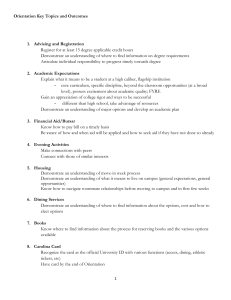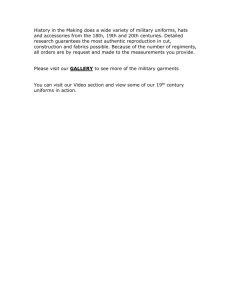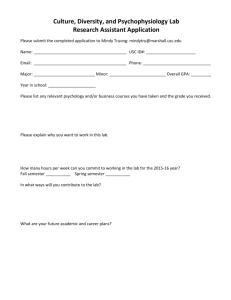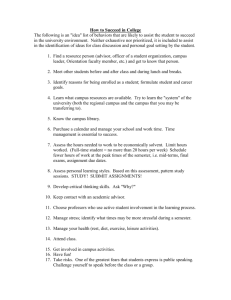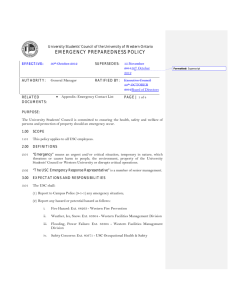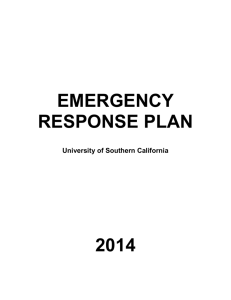EXHIBITION: “IT MAY BE LEGAL, BUT IS IT RIGHT
advertisement
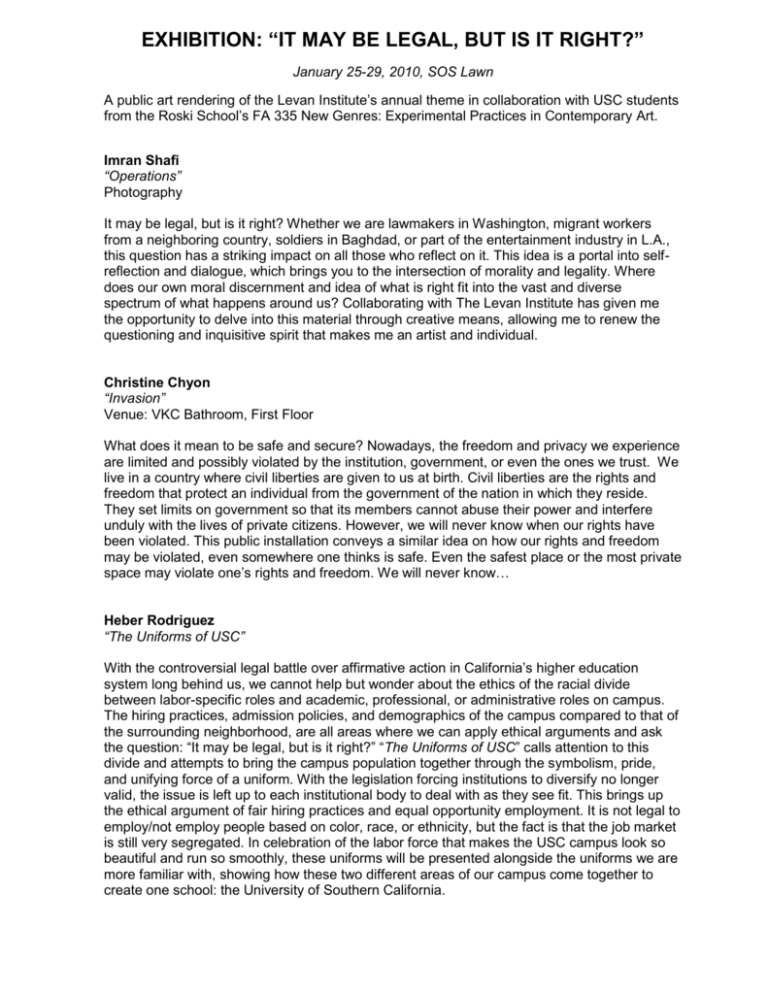
EXHIBITION: “IT MAY BE LEGAL, BUT IS IT RIGHT?” January 25-29, 2010, SOS Lawn A public art rendering of the Levan Institute’s annual theme in collaboration with USC students from the Roski School’s FA 335 New Genres: Experimental Practices in Contemporary Art. Imran Shafi “Operations” Photography It may be legal, but is it right? Whether we are lawmakers in Washington, migrant workers from a neighboring country, soldiers in Baghdad, or part of the entertainment industry in L.A., this question has a striking impact on all those who reflect on it. This idea is a portal into selfreflection and dialogue, which brings you to the intersection of morality and legality. Where does our own moral discernment and idea of what is right fit into the vast and diverse spectrum of what happens around us? Collaborating with The Levan Institute has given me the opportunity to delve into this material through creative means, allowing me to renew the questioning and inquisitive spirit that makes me an artist and individual. Christine Chyon “Invasion” Venue: VKC Bathroom, First Floor What does it mean to be safe and secure? Nowadays, the freedom and privacy we experience are limited and possibly violated by the institution, government, or even the ones we trust. We live in a country where civil liberties are given to us at birth. Civil liberties are the rights and freedom that protect an individual from the government of the nation in which they reside. They set limits on government so that its members cannot abuse their power and interfere unduly with the lives of private citizens. However, we will never know when our rights have been violated. This public installation conveys a similar idea on how our rights and freedom may be violated, even somewhere one thinks is safe. Even the safest place or the most private space may violate one’s rights and freedom. We will never know… Heber Rodriguez “The Uniforms of USC” With the controversial legal battle over affirmative action in California’s higher education system long behind us, we cannot help but wonder about the ethics of the racial divide between labor-specific roles and academic, professional, or administrative roles on campus. The hiring practices, admission policies, and demographics of the campus compared to that of the surrounding neighborhood, are all areas where we can apply ethical arguments and ask the question: “It may be legal, but is it right?” “The Uniforms of USC” calls attention to this divide and attempts to bring the campus population together through the symbolism, pride, and unifying force of a uniform. With the legislation forcing institutions to diversify no longer valid, the issue is left up to each institutional body to deal with as they see fit. This brings up the ethical argument of fair hiring practices and equal opportunity employment. It is not legal to employ/not employ people based on color, race, or ethnicity, but the fact is that the job market is still very segregated. In celebration of the labor force that makes the USC campus look so beautiful and run so smoothly, these uniforms will be presented alongside the uniforms we are more familiar with, showing how these two different areas of our campus come together to create one school: the University of Southern California. Junxian Poon ”Life” Sculpture Life is full of agony. In fact, nobody can fulfill all of their desires because of different reasons, such as family, social norms and peer-pressure. Everyone is freely and legally able to live his or her life in a depressing manner. We can go to a group gathering with a sad face and shut our mouth. We can cry sadly in a wedding party. We can show our emotion legally. However, depression of a person affects others. And we are living in mutual society, so not only our personal interest should be respected, but also the interests of other members of the society. The other members should have rights to be happy too, but revealing our negative emotions could violate their right of being happy. Considering only ourselves would be selfish which is not right, but we actually have legal rights to show our emotion. Which begs the question: would it be right to ruin the happiness of others by showing our negative emotion, even though we are legally able to reveal our negative emotion? Jen Wohlner “Google Maps Tours” Performance Art at Tent Wednesday, January 27, 4:00 p.m. Join me on a tour of your/my/our hometown! By using Google Maps to explore and explain places I may or may not have ever been, I play with ideas concerning surveillance, truth and spoken histories. I also beg the viewer to make a choice about whether or not they can trust my authoritative voice. Andrea Cecilia Monico “The Aftermath” Photography The intention of “The Aftermath” is for others to exhibit varying degrees of exploitation of power that numerous people experience throughout their lives. As the title suggests, the photographs represent the impact of exploitation for each individual portrayed. Half of the piece is the reality that everyone can plainly observe, depicted through the photograph, and the other half is the individuals’ internalization of emotions and reactions created through their experience, represented by the marker drawing. These two components create multiple views of the story, allowing the observer to unravel the details of these individuals’ experiences. There are apparent flaws in the legal system that allow for a margin of individuals to abuse their power due to an inability to prove them as violators. Some actions of exploitation may not be legal but it may be difficult to prosecute as a result of a “he said she said” argument. Consequentially, abuse of power may not be corrected or fought against for an insufficient will to prosecute or poor representation of evidence. Kelly Johnson “The Vindicated Graffiti Venture” Malia Makowicki “Game Day Fun” I created seven pages that look like they are taken from a children’s coloring book entitled, “Game Day Fun.” I wanted to satirize the relationship between the alcohol industry and college sports through dark humor and cynical illustrations. My piece raises questions about marketing alcoholic beverages to a potentially underage audience. It may be legal but is it right? __________________________________________________________________________ The Levan Institute for Humanities and Ethics gives special thanks to Prof. Robby Herbst, FA 335 New Genres: Experimental Practices in Contemporary Art. Herbst is an interdisciplinarian. Broadly, he is interested in socio-political formations; behavioral architecture, languages of dissent, and counter cultures. Exploration of these fields have lead him to visual art, writing, group work, independent media, public theory and event/exhibition organizing. Collective projects of note include the vast universe of the Journal of Aesthetics & Protest (exhibitions, publishing, organizing), The October Surprise, Llano Del Rio Collective, and a collaboration of no name exploring psychedelia. He is a recipient of a Warhol Foundation Writers Grant for a project examining the phenomena of "Possibility" within relational art and activism, and has lectured widely on art and politics.
